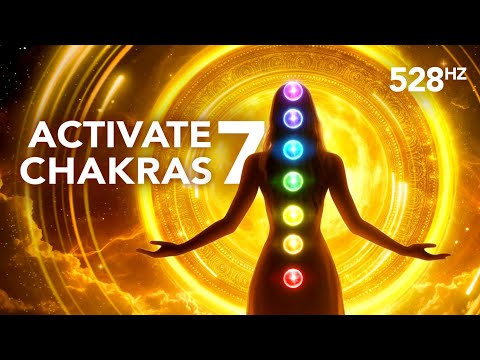In the modern world, where stress and anxiety have become commonplace, it is crucial to prioritize relaxation and self-care.
Yoga, a holistic practice encompassing physical postures, controlled breathing, and meditation techniques, provides a safe and effective means of achieving deep relaxation.
By incorporating specific yoga poses into one’s routine, individuals can experience a profound sense of calm and tranquility, freeing the body and mind from stress and tension.
This article aims to guide readers in discovering the ultimate yoga poses for relaxation. From the gentle Child Pose to the rejuvenating Corpse Pose, each pose offers unique benefits to reduce stress, improve flexibility, and enhance mental clarity.
Whether you are a beginner or an experienced practitioner, this comprehensive guide will equip you with the knowledge and techniques to embark on a journey of relaxation through the power of yoga.
Child Pose (Balasana)
The Child Pose (Balasana) is a restorative yoga position that provides a sense of comfort and relaxation to the practitioner. This gentle pose is often used as a resting position during yoga practice, allowing the body and mind to unwind and release tension.
The Child Pose offers numerous benefits for relaxation, including the release of tension in the back, shoulders, and hips. It also helps to calm the mind, reduce stress, and promote a sense of inner peace.
There are variations of the Child Pose that can cater to different levels of flexibility. For those with tight hips or limited flexibility, using a bolster or blanket under the torso can provide extra support and make the pose more accessible. Alternatively, for those with more flexibility, extending the arms forward or out to the sides can deepen the stretch and increase the relaxation benefits.
Regardless of your level of flexibility, the Child Pose is a wonderful addition to any yoga practice as it invites a sense of surrender, tranquility, and renewal.
Downward-Facing Dog (Adho Mukha Svanasana)
Exploring the benefits of relaxation in yoga, one notable pose is the Downward-Facing Dog (Adho Mukha Svanasana). This pose is a fundamental part of any yoga practice and offers numerous benefits for the mind and body. Some of the key benefits of practicing the downward-facing dog pose include:
- Strengthens the arms, shoulders, and core muscles.
- Stretches the hamstrings, calves, and Achilles tendons.
- Improves posture and alignment.
- Relieves tension and stress in the upper body.
To ensure safety and comfort during the practice, it’s important to be aware of variations and modifications of the downward-facing dog pose. These include using props such as blocks or a wall for support, bending the knees slightly to alleviate pressure on the hamstrings, or practicing the pose with a wider stance for more stability. Remember to listen to your body and make adjustments as needed to fully enjoy the benefits of this rejuvenating pose.
Cat Pose (Marjaryasana)
Cat Pose (Marjaryasana) offers a multitude of benefits for practitioners seeking relaxation and flexibility. This gentle and accessible pose is a wonderful addition to any yoga practice.
One of the key benefits of practicing cat pose is its ability to release tension in the spine and back muscles, promoting relaxation and reducing stress.
The gentle arching and rounding of the spine in this pose also helps to improve flexibility and mobility in the spine, making it an excellent choice for those looking to increase their range of motion.
Additionally, cat pose can be modified to suit individual needs and preferences. Some variations include adding a gentle twist or incorporating movement with the breath.
Regardless of the variation chosen, cat pose is a valuable tool for finding relaxation and flexibility on the mat.
Extended Triangle Pose (Utthita Trikonasana)
One popular yoga pose for relaxation and increased flexibility is the Extended Triangle Pose (Utthita Trikonasana). This pose involves standing with legs wide apart and extending one arm down to touch the toes while the other arm reaches towards the sky, creating a triangle shape with the body.
Benefits of practicing extended triangle pose include:
- Stretches and strengthens the legs, hips, and spine
- Improves balance and posture
- Increases flexibility in the hamstrings and groin
- Stimulates digestion and relieves constipation
For beginners, modifications can be made to make the pose more accessible. These include using a block or a chair for support, keeping a slight bend in the knees, and reaching the hand towards the shin instead of the floor. It is important to listen to your body and only go as far as feels comfortable.
With regular practice, the Extended Triangle Pose can help you relax, become more flexible, and experience the numerous benefits of yoga.
Extended Puppy Pose (Uttana Shishosana)
The Extended Puppy Pose (Uttana Shishosana) is another beneficial yoga pose for relaxation and increased flexibility. This pose is a variation of the traditional Child’s Pose and provides a deeper stretch for the spine, shoulders, and hips. It is a gentle inversion that helps to release tension in the upper body and promote a sense of calm and tranquility.
One of the main benefits of the Extended Puppy Pose is its ability to stretch and lengthen the spine, helping to improve posture and relieve back pain. It also opens up the chest and shoulders, allowing for better breathing and increased mobility in these areas. Additionally, this pose can help to release tension in the hips and stretch the muscles of the lower body.
To achieve proper alignment in the Extended Puppy Pose, start in a tabletop position on your hands and knees. Walk your hands forward while keeping your hips above your knees. Lower your chest towards the mat and rest your forehead on the floor or a block for support. Keep your arms extended and your shoulders relaxed. Focus on lengthening your spine and breathing deeply into your back.
Variations of the Extended Puppy Pose include using props such as blankets or bolsters under the chest for added support and elevation. This modification can be helpful for those with limited flexibility or discomfort in the shoulders or neck. Another variation is to widen the knees slightly to create more space in the hips and allow for a deeper stretch.
As with any yoga pose, it is important to listen to your body and find a variation of the Extended Puppy Pose that feels comfortable and safe for you. Remember to breathe deeply and relax into the stretch, allowing any tension or stress to melt away. With regular practice, the Extended Puppy Pose can become a valuable tool for relaxation, increased flexibility, and overall well-being.
Bridge Pose (Setu Bandha Sarvangasana)
Moving on from the benefits of the Extended Puppy Pose, let’s explore the next pose for relaxation and increased strength: Bridge Pose (Setu Bandha Sarvangasana).
Bridge Pose is a rejuvenating asana that offers numerous benefits for the mind and body. Here are some key advantages of practicing Bridge Pose:
- Strengthens the back muscles, glutes, and hamstrings.
- Stretches the chest, neck, and spine, promoting flexibility.
- Stimulates the abdominal organs, aiding digestion.
- Calms the mind and reduces anxiety and fatigue.
Bridge Pose can be modified to suit different levels of flexibility and strength. Here are three variations:
- Supported Bridge: Place a block or bolster under the sacrum for extra support.
- One-Legged Bridge: Lift one leg towards the ceiling while holding the pose to increase the challenge.
- Wheel Pose: Advanced practitioners can transition into the deeper backbend of Wheel Pose for a more intense stretch.
Remember to listen to your body and practice with awareness. Enjoy the benefits of Bridge Pose as you relax and strengthen your body.
Legs Up the Wall (Viparita Karani)
To experience deep relaxation and rejuvenation, practitioners can try the restorative yoga pose of Legs Up the Wall (Viparita Karani). This pose involves lying on the floor with the legs extended up against a wall, forming an L-shape with the body.
Legs Up the Wall is a gentle inversion that offers numerous benefits for both the body and mind. By allowing the legs to be elevated above the heart, this pose encourages blood circulation and lymphatic flow, reducing swelling and promoting overall relaxation. It can also help relieve tension in the lower back and legs, alleviate anxiety and stress, and improve digestion.
Variations of Legs Up the Wall include using a bolster or blanket under the hips for added support, or bending the knees slightly to modify the intensity. Practicing this pose regularly can bring profound calmness, restoration, and a sense of grounding to one’s yoga practice.
Knees-to-Chest Pose (Apanasana)
Continuing the exploration of restorative yoga poses for relaxation, the next pose to discuss is Knees-to-Chest Pose (Apanasana). This gentle pose offers a multitude of benefits for both the body and mind.
Here are some discussion ideas for the subtopic ‘knees to chest pose (apanasana)’:
- Benefits of incorporating knees to chest pose in your daily yoga routine:
- Relieves tension in the lower back and hips
- Stretches and lengthens the spine
- Massages the digestive organs, aiding in digestion
- Calms the mind and releases stress and anxiety
- Variations and modifications of the knees to chest pose for different levels of flexibility and comfort:
- Option to place a blanket or bolster under the hips for extra support
- Variation of hugging one knee at a time to target one side of the body
- Use of a yoga strap or towel to gently pull the knees closer to the chest for a deeper stretch
- Option to rock gently side to side to release any tension in the lower back
Incorporating Knees-to-Chest Pose (Apanasana) into your daily yoga routine can provide a soothing and nurturing experience for your body and mind. Remember to listen to your body and make any necessary modifications to ensure a safe and comfortable practice.
Reclined Bound Angle/Cobblers Pose (Supta Baddha Konasana)
Transitioning from the previous restorative yoga pose, Knees-to-Chest Pose (Apanasana), let us now delve into the benefits and techniques of Reclined Bound Angle/Cobblers Pose (Supta Baddha Konasana).
This pose provides a deep sense of relaxation and restoration to the body and mind. Practicing Reclined Bound Angle Pose helps to release tension in the hips, lower back, and groin area, promoting flexibility and relieving discomfort. It also stimulates the abdominal organs, improving digestion and circulation.
Modifications of this pose can be made to accommodate different body types. For those with tight hips, using props such as blocks or blankets under the knees can provide support and increase comfort. If you have knee or lower back issues, placing a bolster or folded blanket under the spine can help alleviate strain. Remember to listen to your body and adjust the pose as needed, ensuring safety and comfort throughout your practice.
Incorporating Reclined Bound Angle/Cobblers Pose into your yoga routine can bring a sense of peace and harmony, allowing you to fully relax and let go of any tension or stress. Take the time to explore this pose and experience its many benefits for yourself.
Corpse Pose (Savasana)
After exploring the benefits and techniques of Reclined Bound Angle/Cobblers Pose (Supta Baddha Konasana), we now turn our attention to the deeply relaxing and rejuvenating Corpse Pose (Savasana).
Corpse Pose, also known as Savasana, is often considered the final and most important pose in a yoga practice. It is a simple yet powerful pose that allows the body and mind to completely relax and let go.
Benefits and variations of Corpse Pose (Savasana):
- Promotes deep relaxation and stress reduction
- Calms the nervous system and improves sleep quality
- Reduces anxiety and enhances mental clarity
- Relaxes and rejuvenates the body, mind, and spirit
Incorporating Corpse Pose (Savasana) into a daily relaxation routine:
- Find a quiet and comfortable space where you can lie down flat on your back
- Close your eyes and bring your awareness to your breath
- Allow your body to completely relax, releasing tension from head to toe
- Stay in this pose for 5-10 minutes, focusing on deep breathing and surrendering to the present moment.
Incorporating Corpse Pose (Savasana) into your daily relaxation routine can bring numerous benefits to your overall well-being. Take the time to embrace this pose and allow yourself to experience deep relaxation and rejuvenation.
Conclusion
Incorporating yoga poses for relaxation into your daily routine can have profound effects on your overall well-being. Not only does yoga help reduce stress and tension, but it also improves flexibility and enhances mental clarity.
According to a recent study, practicing yoga regularly can lead to a 50% reduction in anxiety levels. So why not give these ultimate yoga poses a try and experience the transformative power of relaxation through yoga for yourself?
Start your journey today and reap the countless benefits that yoga has to offer.




